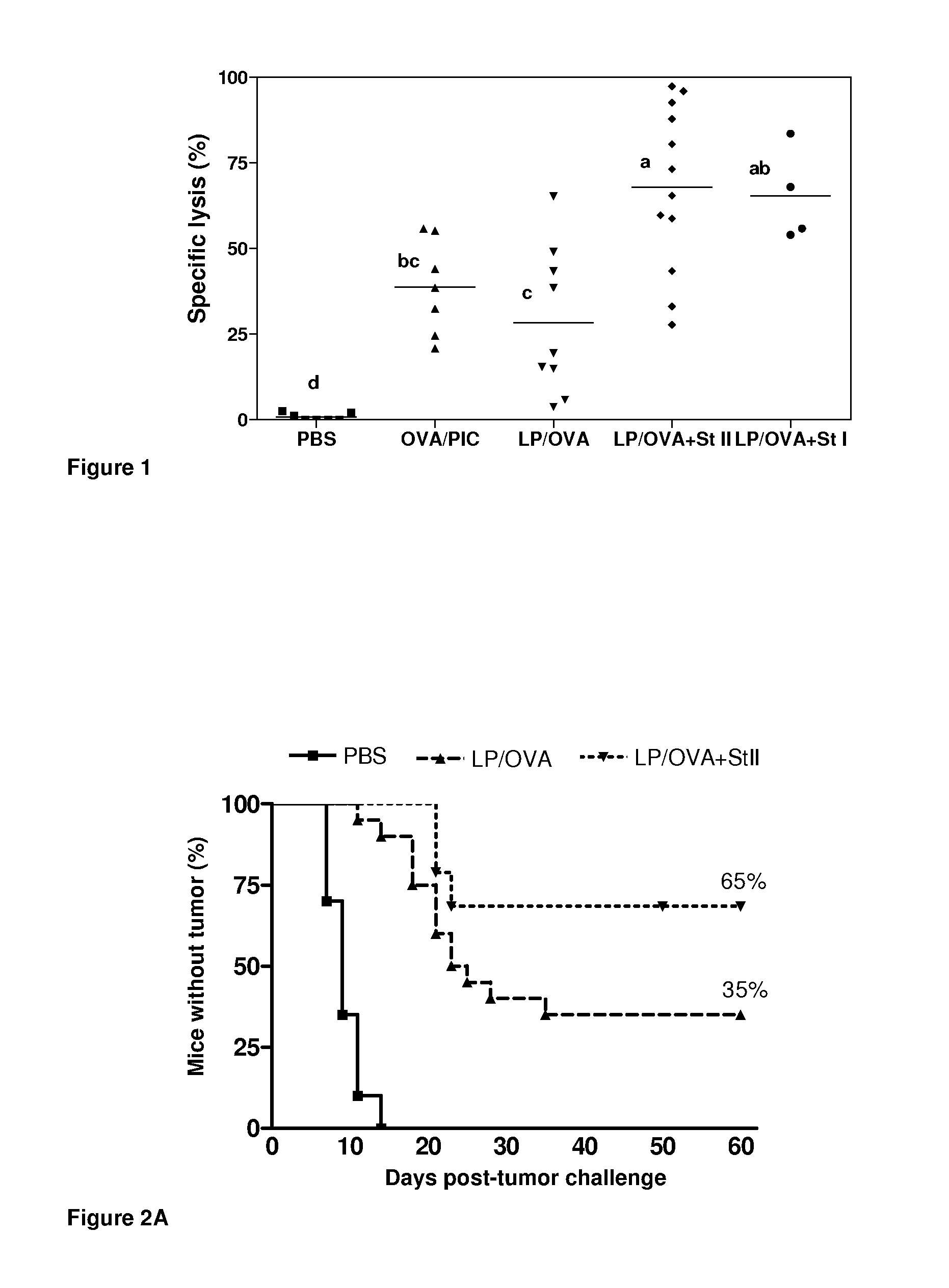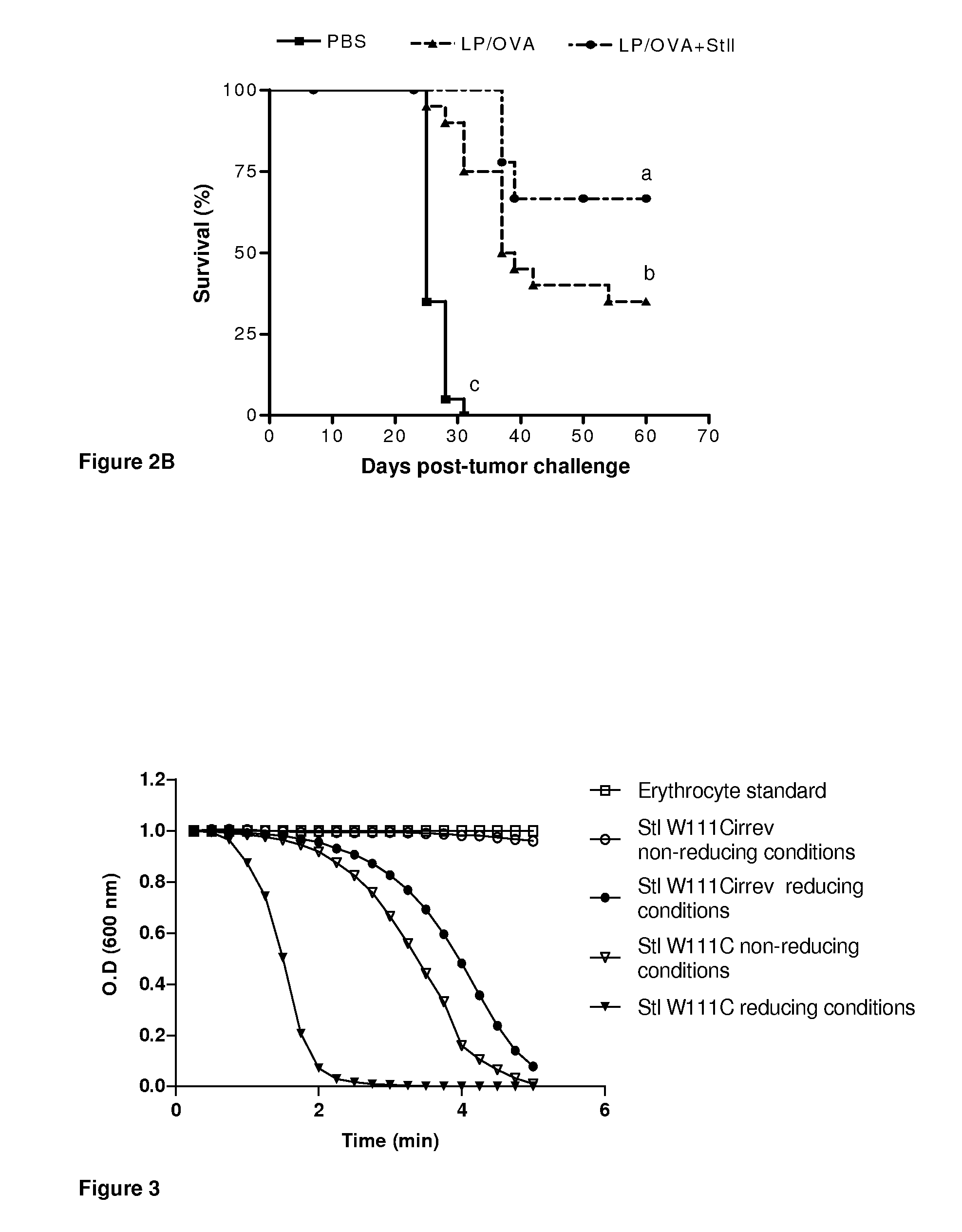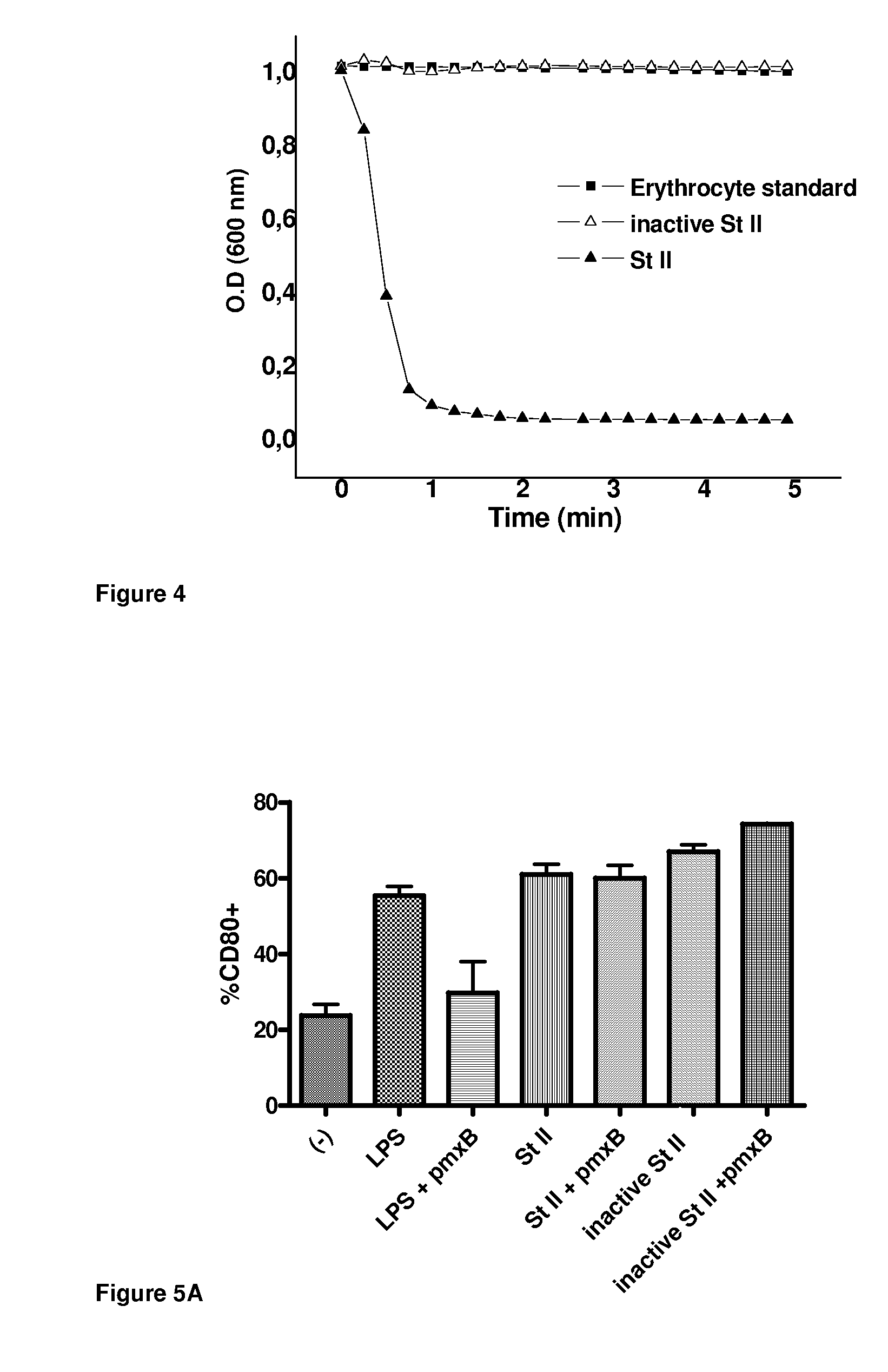Vaccine composition based on sticholysin encapsulated into liposomes
a technology of sticholysin and liposomes, applied in the field of biotechnology applied to human health, can solve the problems of insufficient encapsulation of solutes such as proteins, inability of liposomal vesicles to enhance ctl response, and reduced the efficiency of virosomes to release antigens or genes to cells,
- Summary
- Abstract
- Description
- Claims
- Application Information
AI Technical Summary
Benefits of technology
Problems solved by technology
Method used
Image
Examples
example 1
Assessment of Cytotoxicity and CTL Response of the Vaccinal Vehicle Using Native StI Or StII And OVA As Protein Antigen.
[0034]The vaccinal vehicle based on liposomes was prepared as previously described.
[0035]In DRVs vesicles comprised of DPPC and Cho (molar ratio 1:1), OVA as model antigen and Sts (StI or StII) were co-encapsulated in a 10 μmol of total lipids: 1.1 nmol OVA and 0.3 nmol of St molar ratio in phosphate buffer saline (PBS) pH 7.4. Following this procedure, two vacinal compositions were obtained:[0036]Vaccinal Composition A: DRVs liposomes of DPPC:Cho (60 μmol of total lipids) encapsulating 6.6 nmol (50 μg) of OVA.[0037]Vaccinal Composition B: DRVs liposomes of DPPC:Cho (60 μmol of total lipids) co-encapsulating 6.6 nmol (50 μg) of OVA and 1.88 nmol of StI or StII.
[0038]Fifteen C57BL / 6 female mice with a body weight ranging from 18-20 g were selected and separated into 5 experimental groups of three animals each.
[0039]Group 1 (negative control) was inoculate by sc rout...
example 2
Induction of Antitumoral Protection of the Vaccinal Vehicle in the OVA Protein Model.
[0046]The ability of the liposome-based vaccines to induce antitumoral protection was studied. To this end, sixty C57BL / 6 female mice with a body weight ranging between 18-20 g were selected and separated into 3 assay groups of 20 animals each.
[0047]Group 1 (negative control) was inoculated by im route, on days 0 and 12, with 0.2 mL of phosphate buffer saline (PBS).
[0048]Group 2 was inoculated by im route, on days 0 and 12, with 0.2 mL of the vaccinal composition A described in example 1 (equivalent to 1.1 nmol or 50 μg of OVA).
[0049]Group 3 was inoculated by im route, on days 0 and 12, with 0.2 mL of the vacinal composition B described in example 1 (equivalent to 1.1 nmol or 50 μg of OVA and 0.3 nmol or 6.25 μg of StII).
[0050]All the Groups 1 to 3 were challenges on day 19 with 3×105 cells from the tumor line E.G7 by subcutaneous route (0.2 mL).
[0051]Animals were individualized from day 0 and the f...
example 3
Hemolytic Activity of Sts Mutants.
[0057]Pore-formation in erythrocyte membrane produces a colloid osmotic shock that brings about cell lysis. Pore-forming ability of the so called porins can be followed by its hemoleytic activity (HA) which can be experimentally determined by measuring the loss of apparent absorbance (λ=600 nm) of an erythrocyte suspension due to cell lysis.
[0058]In the assay, the HA of the StIW111C irreversibly inactive dimer (StI W111Cirrev) was compared with that of the reversible dimer StIW111C, in reducing (2-ME 0.1 mol / l) and non-reducing conditions, at a relatively high protein concentration in the assay (0.15 μmol / l), if compare with the HA of StI / StII reported by Álvarez et al. in Toxicon, 2009, 54(8):1135-47. The time-courses of hemolysis shown in FIG. 3 indicate that StIW111Cirrev was inactive under non-reducing conditions. Under reducing conditions, StIW111Cirrev showed less activity than StIW111C either completely reduced or non-reduced.
PUM
| Property | Measurement | Unit |
|---|---|---|
| diameter | aaaaa | aaaaa |
| molecular mass | aaaaa | aaaaa |
| diameter | aaaaa | aaaaa |
Abstract
Description
Claims
Application Information
 Login to View More
Login to View More - R&D
- Intellectual Property
- Life Sciences
- Materials
- Tech Scout
- Unparalleled Data Quality
- Higher Quality Content
- 60% Fewer Hallucinations
Browse by: Latest US Patents, China's latest patents, Technical Efficacy Thesaurus, Application Domain, Technology Topic, Popular Technical Reports.
© 2025 PatSnap. All rights reserved.Legal|Privacy policy|Modern Slavery Act Transparency Statement|Sitemap|About US| Contact US: help@patsnap.com



